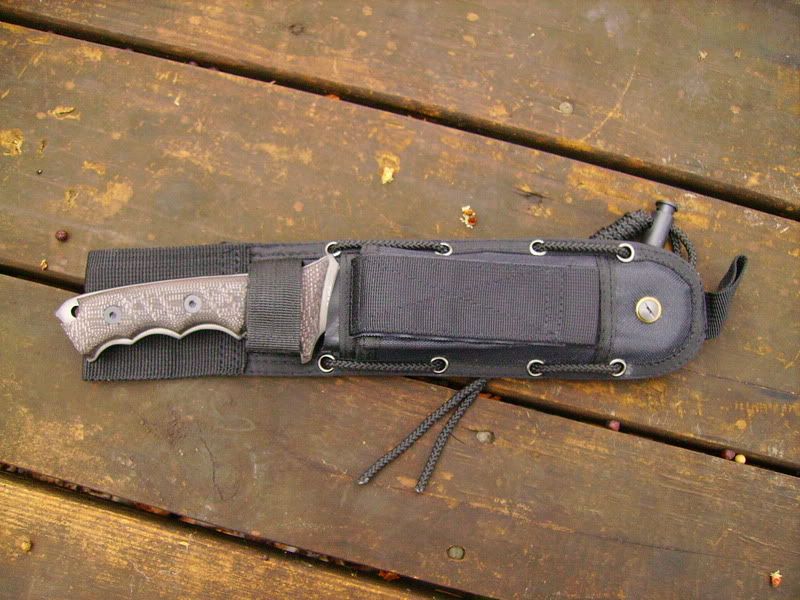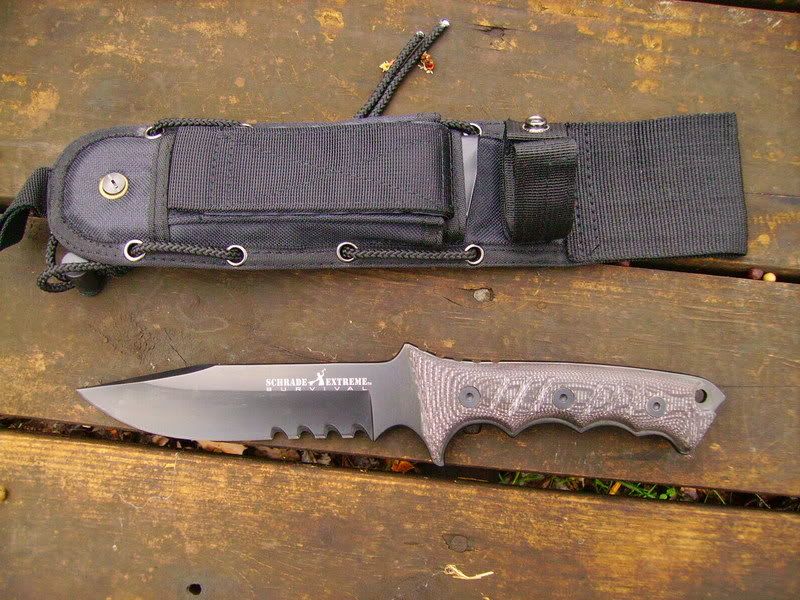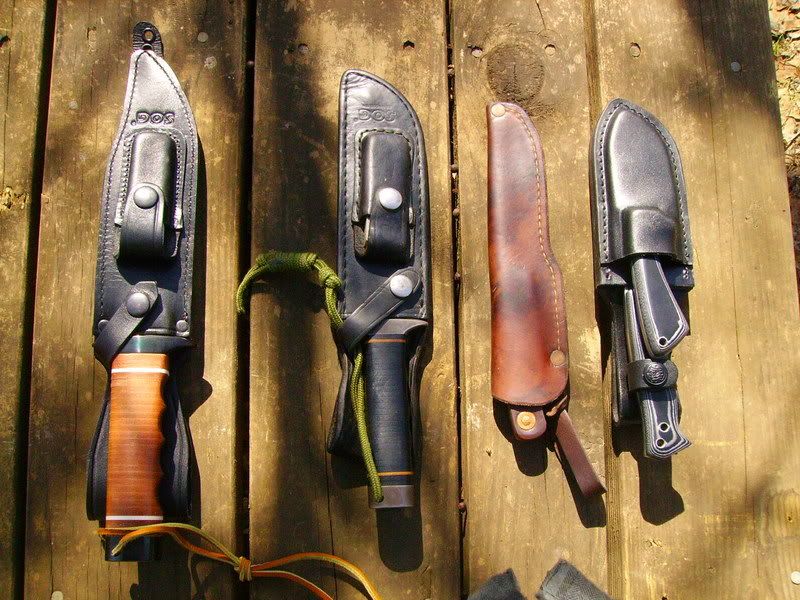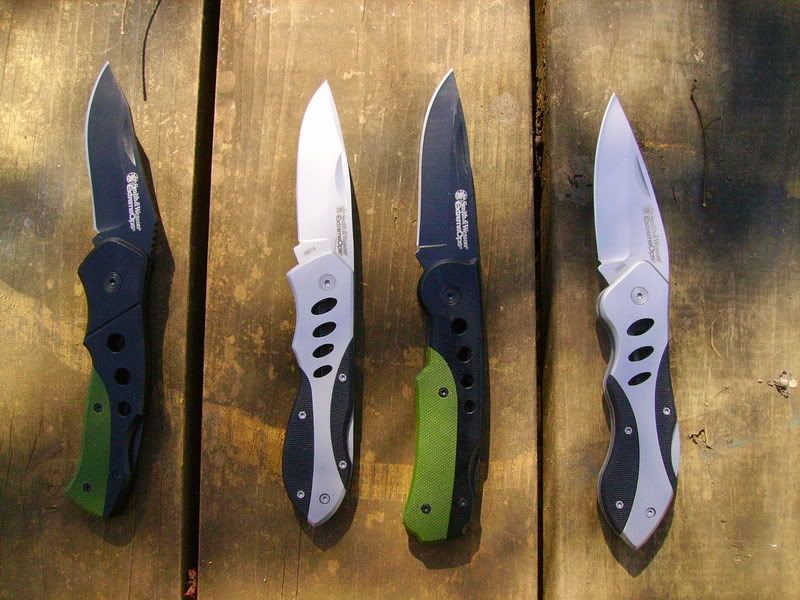This is the Smith and Wesson SWEXT. While it is marketed in their Extreme Ops tactical line up I felt with its size, extra weight, and very thick blade (.25 inches) it would function more in the role of a survival tool than as a weapon and chose to try it out in that role. The blade is 5 1/2 inches long, 2 inches wide with a slightly recurved edge and has a fuller on each side. It has a green canvas micarta handle
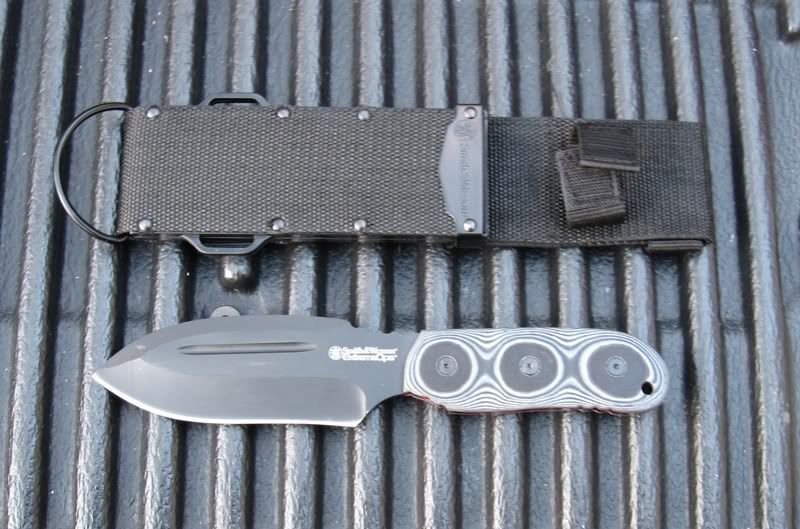
First I checked out the edge by cutting a little webbing and though it wasnt quite as sharp as some other knives it handled that just fine.
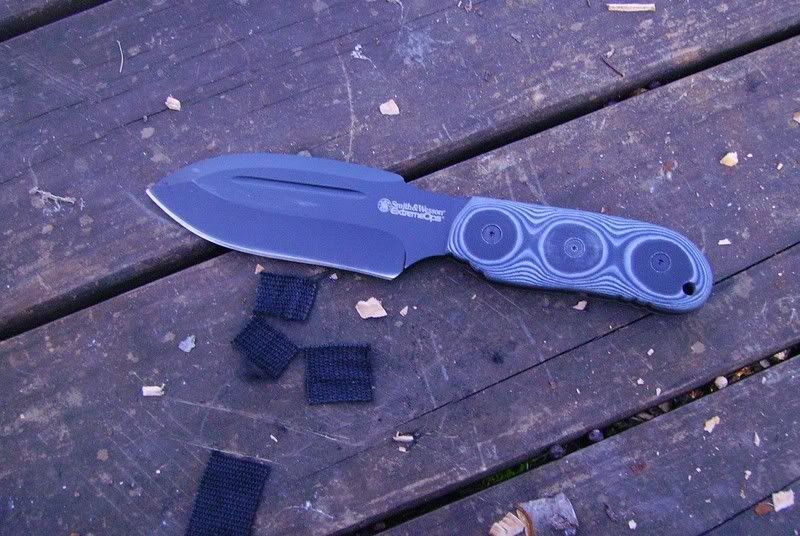
Next I did a little chopping and splitting and it handled that well also. The bean shaped handled being rounded the way it is actually pretty comfortable when chopping.

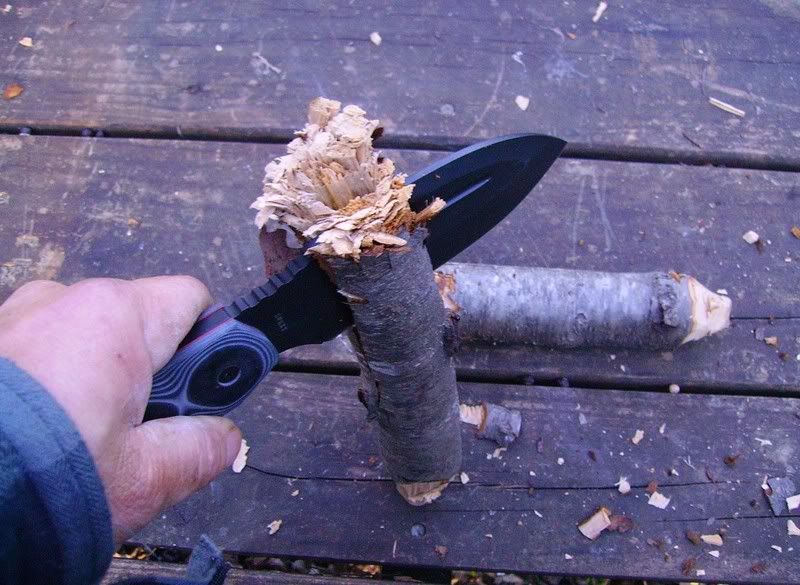
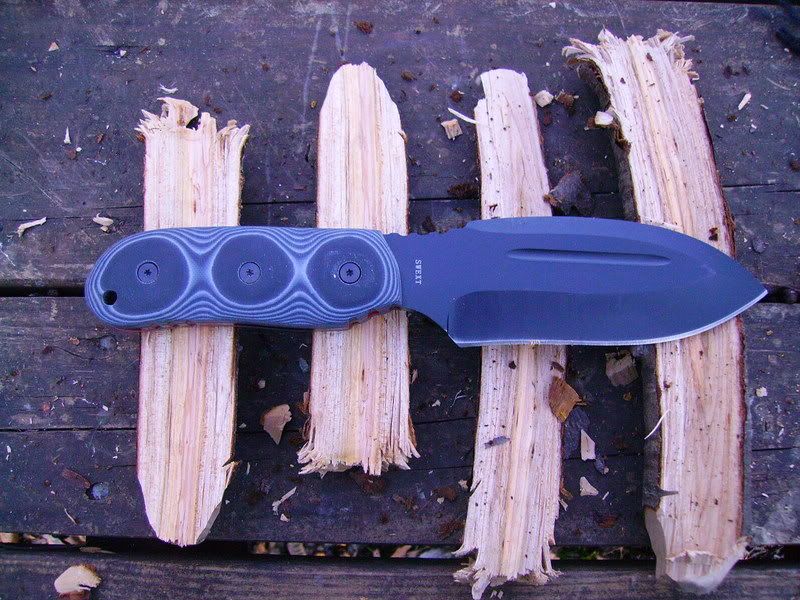
I chopped on some fatwood a bit to check the edge retention, and it held up fine for the time I chopped with it.



I like the choil and grooved thumb ramp, these make the knife easy to control. It handled making a fuzz stick fine.
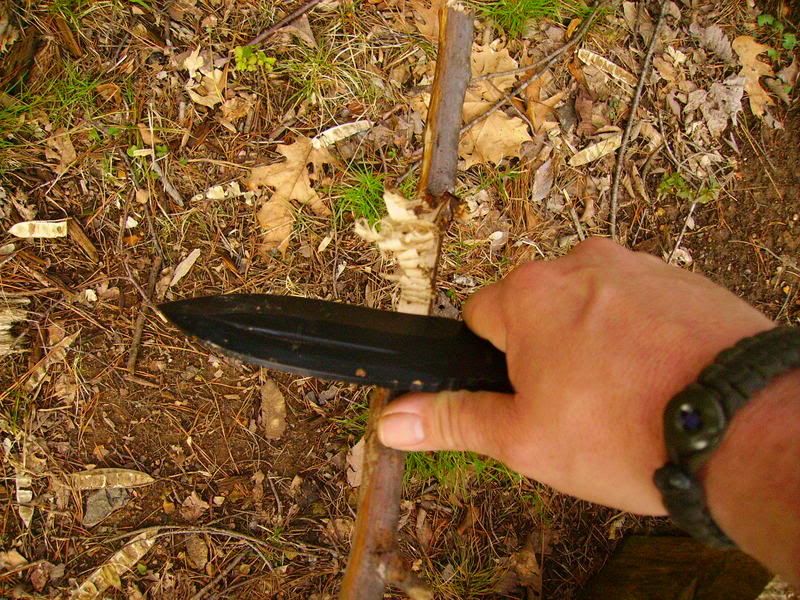
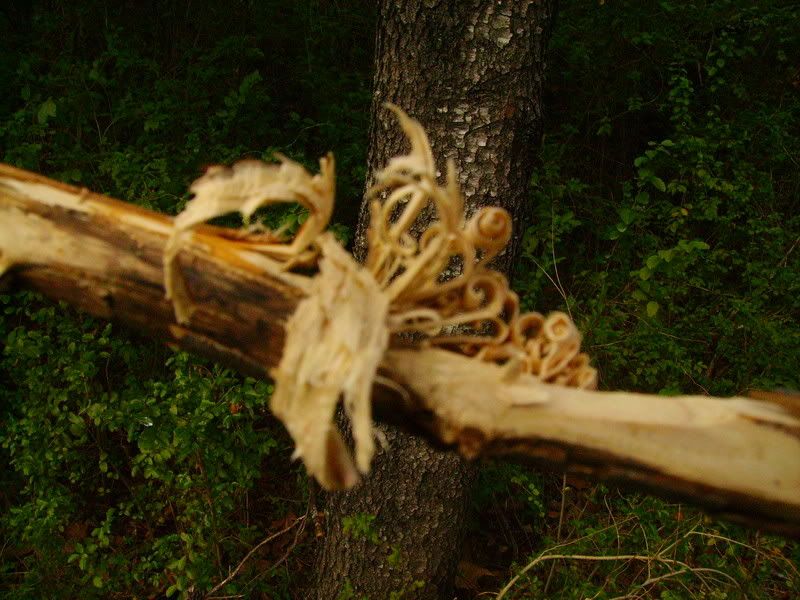
The size and thickness of the blade allows it to function well as a digging tool. I dug into an old log to dig out some punk and it did very well.
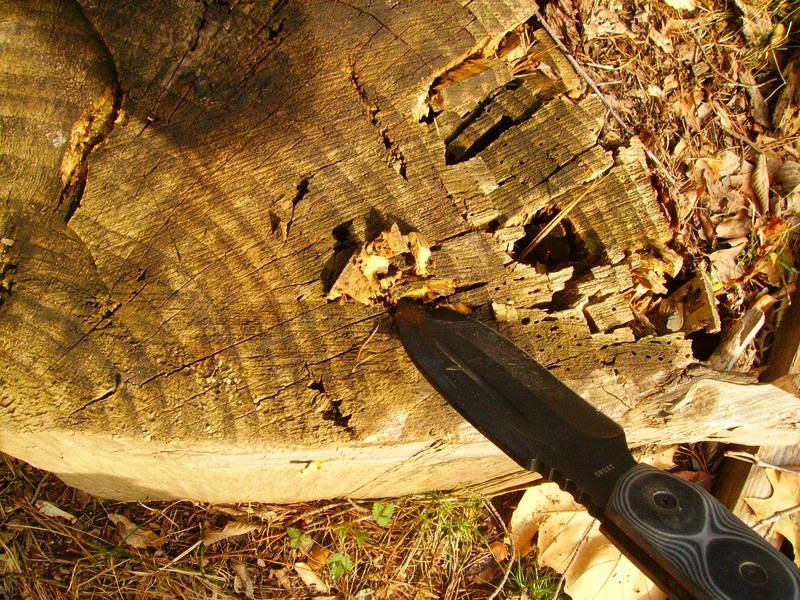

I also dug up some wild onions. These are good to add flavor to any stews or soups cooked out in the bush and are good for you too, but because of rocks this can be rough on the edge of a knife over time one of the reasons I advocate having a secondary fixed blade.
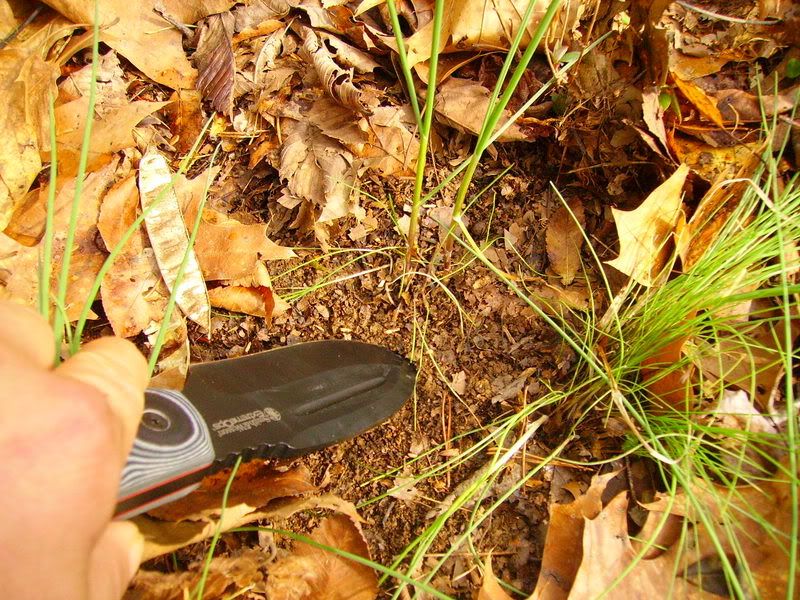
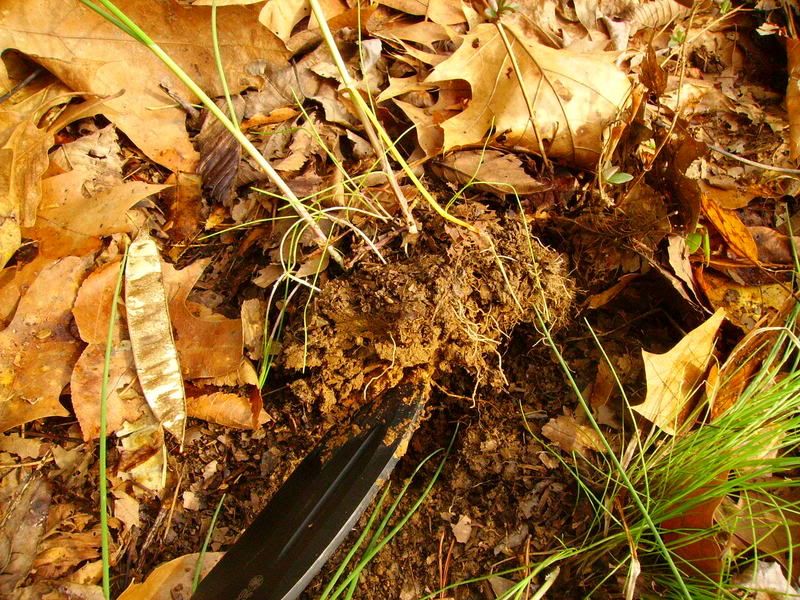
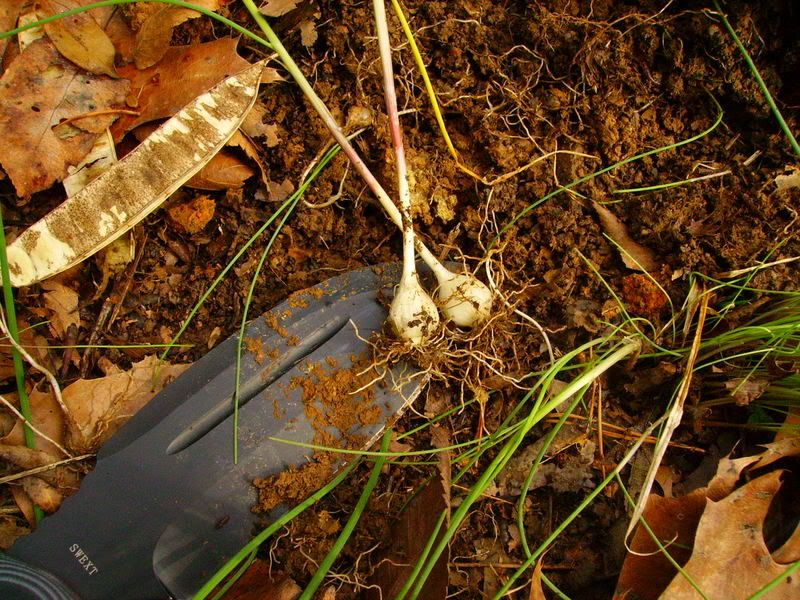
Im not really crazy about hook and loop fastening systems for blade retention they do tend to have a lot of give in them.
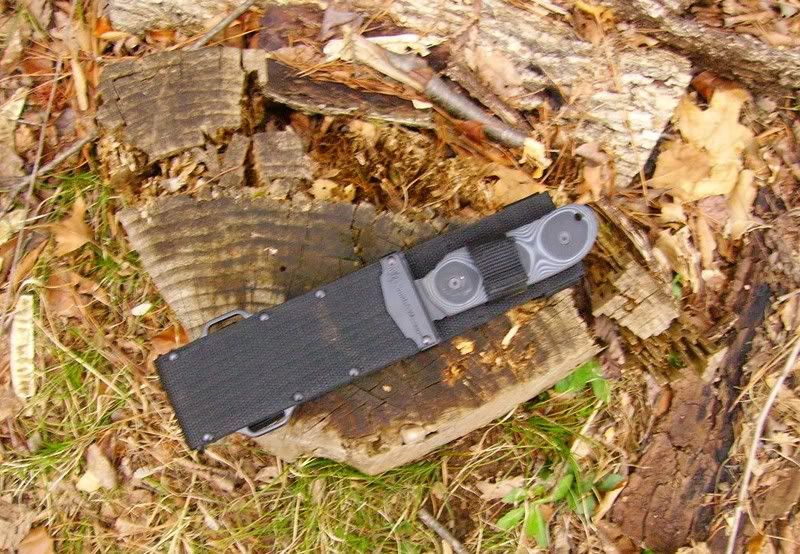
and I do have two issues with the sheath. First it does allow a lot of movement in the handle.
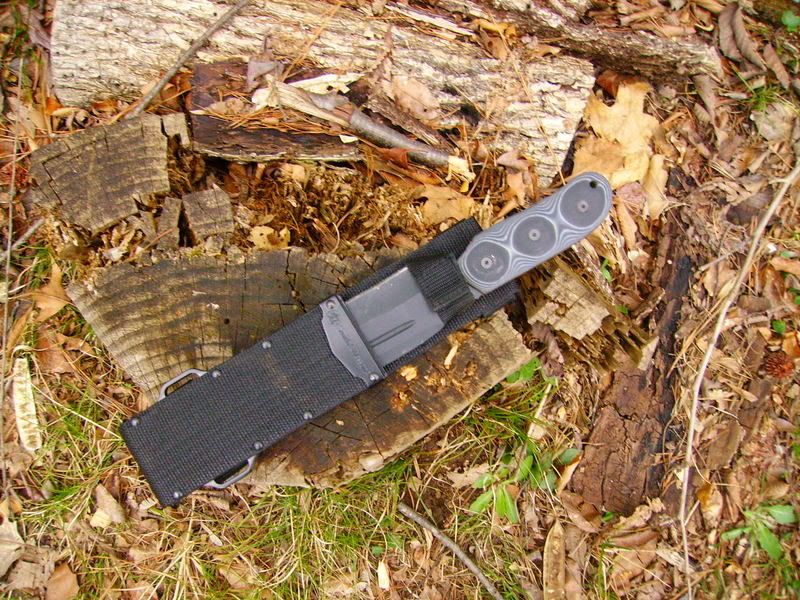
Secondly this one is sewn in such a way as it would only fit on a narrow belt.
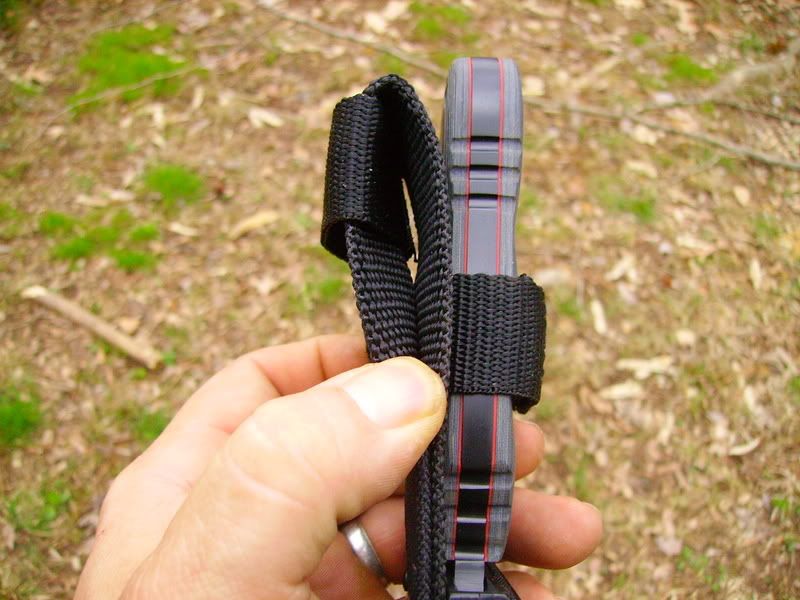
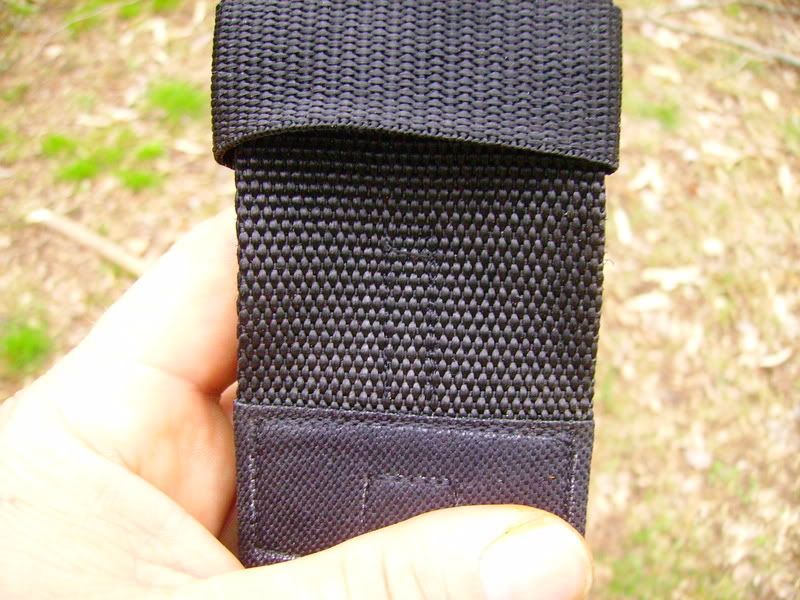
But other than that the sheath seems to be sturdily constructed with a heavy liner and plenty of rivets and stitching to hold it together over time

All in all it seems to be a good knife for rough work., and functional in some of the more finer work also. I think it would easily crack nuts, and even make a decent improvised cleaver when processing game or fish. A pretty good knife to have tucked back in your pack or your vehicle.

First I checked out the edge by cutting a little webbing and though it wasnt quite as sharp as some other knives it handled that just fine.

Next I did a little chopping and splitting and it handled that well also. The bean shaped handled being rounded the way it is actually pretty comfortable when chopping.



I chopped on some fatwood a bit to check the edge retention, and it held up fine for the time I chopped with it.



I like the choil and grooved thumb ramp, these make the knife easy to control. It handled making a fuzz stick fine.


The size and thickness of the blade allows it to function well as a digging tool. I dug into an old log to dig out some punk and it did very well.


I also dug up some wild onions. These are good to add flavor to any stews or soups cooked out in the bush and are good for you too, but because of rocks this can be rough on the edge of a knife over time one of the reasons I advocate having a secondary fixed blade.



Im not really crazy about hook and loop fastening systems for blade retention they do tend to have a lot of give in them.

and I do have two issues with the sheath. First it does allow a lot of movement in the handle.

Secondly this one is sewn in such a way as it would only fit on a narrow belt.


But other than that the sheath seems to be sturdily constructed with a heavy liner and plenty of rivets and stitching to hold it together over time

All in all it seems to be a good knife for rough work., and functional in some of the more finer work also. I think it would easily crack nuts, and even make a decent improvised cleaver when processing game or fish. A pretty good knife to have tucked back in your pack or your vehicle.


